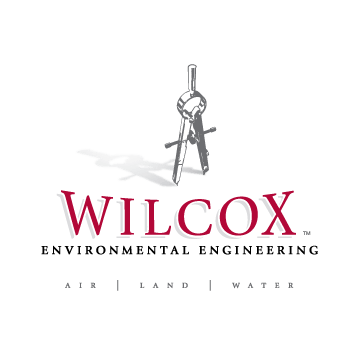The environmental consulting community eagerly awaits the anticipated changes to the current Phase I Standard. The current version, ASTM E1527-13, will sunset by December 31, 2021. Proposed changes and revisions are under review by an ASTM volunteer committee and will be presented to the USEPA for consideration and approval in early 2021.
In the early days of environmental consulting, there was no commonality in the way due diligence was performed, but it is widely understood that it originates from the Love Canal incident in Niagara Falls, New York. [link here]
As in most cases, it is easier to understand where we are and where we are going if we understand where we have been. Below is a synopsis of important dates in the evolution of the Phase I Environmental Site Assessment and due diligence standards:
- 1980 CERCLA a/k/a/ Superfund Passed into law – USEPA
- 1986 Superfund Amendments and Reauthorization Act (SARA) – USEPA
- 1993 ASTM E1527-93
- 1994 ASTM E1527-94
- 1997 ASTM E1527-97
- 2000 ASTM E1527-00
- 2002 Brownfields Amendments to CERCLA – USEPA
- 2005 All Appropriate Inquiries (AAI) published in the Federal Register on 11/1/2005 – USEPA
- 2005 ASTM E1527-05
- 2006 AAI went into effect on 11/1/2006 – USEPA
- 2013 ASTM E1527-13
- 2021 ASTM E1527-21?
The ASTM Phase I Standard has undergone numerous revisions and iterations since its inception in 1993. The 2002 Brownfields Amendments provided certain liability protections for bona fide prospective purchasers (BFPP), innocent landowners, and contiguous property owners. These protections could apply to parties that performed All Appropriate Inquiry (AAI) before acquiring a property. Congress required USEPA to define what AAI would encompass as part of the Brownfields Amendments. The USEPA published the AAI requirements, promulgated under 40 CFR Part 112, in the Federal Register on November 1, 2005 (70 FR 66070), and the requirements went into effect on November 1, 2006. As part of the AAI Rule, the ASTM standard released in 2005, known as ASTM E1527-05, was codified into law as constituting AAI.
Since then the ASTM E1527 Standard has been reviewed and revised every eight years which brings us to where we are today. One primary objective of the proposed revision is to “clean up” the current E 1527-13 standard by addressing some “housekeeping issues.”
The major issues and additions we anticipate are listed below:
- Significant Data Gaps (there needs to be more discussion from the environmental professional)
- Changes to definition of Historical Recognized Environmental Condition (HREC)
- Changes to definition of Controlled Recognized Environmental Condition (CREC)
- Lien searches / AULs – should be provided by the user of the report
- Historical research – how much is enough?
- PFAS, PFOA, PFOS, GenX “emerging contaminants”
- Are not currently identified as a hazardous substance by CERCLA, as interpreted by USEPA regulations and the courts, and are not included in the current standard
- The USEPA also continues to evaluate PFAS and other emerging contaminants as part of its CERCLA list.
- If and when such emerging contaminants are defined as “hazardous substances” under CERCLA, such substances must be evaluated within the scope of this standard
Some minor issues that we expect include revisions to definitions, database review requirements, photographic documentation, discussion of polychlorinated biphenyls (PCB’s) in building materials, and the clarification of proper nomenclature: Site vs. Subject Property vs. Property.
We will be monitoring the progress of the proposed changes and will update our current and future clients as more information becomes available.
The Environmental Professionals on Wilcox’s Due Diligence Team have collectively performed hundreds of AAI compliant Phase I Environmental Site Assessments in Indiana, Ohio, Illinois, Michigan, Kentucky, North Carolina, and Arizona. We would welcome the opportunity to discuss your project and assist you with your environmental needs.
About the Author:
Scott D. Connors, LPG, RPG
Scott has over 20 years of experience in the environmental consulting industry as a geologist. He joined Wilcox 1n 2016 and currently serves as Senior Project Manager at Wilcox Environmental Engineering where he is involved in all phases of site investigation and remediation, including proposal, bid acquisition, permitting, monitoring, installation, analysis, and reporting. He is responsible for managing large and complex projects from the point of initial consultation and preparing client proposals, to the oversight of field work, arranging for permits, monitoring progress, and providing analysis and reporting upon completion to the clients, attorneys, insurers, regulatory officials, and other various stakeholders. Scott qualifies as an Environmental Profession and serves as the due diligence / Phase I Environmental Site Assessment / All Appropriate Inquiry (AAI) subject matter expert.

Scott has experience in planning and initiating remediation at petroleum and solvent sites with a variety of technical approaches including excavation and disposal, excavation combined with injection, and installation of many types of mechanical remediation systems (air sparge, soil vapor extraction, groundwater extraction and multi-phase extraction).
He has served as Vice President on the Board of Directors for the Professional Geologists of Indiana (PGI). He currently serves as Community Environmental Liaison for the Town of Speedway, Indiana.
